Price:₹11,000.00
Har Ki Dun is a popular trekking destination in the Indian state of Uttarakhand. It is known for its natural beauty and is often referred to as the “Valley of Gods.” Har Ki Dun Trek takes you through dense forests, and quaint villages, and offers stunning views of the Himalayan peaks.
Har Ki Dun Trek comes under Govind Wildlife Sanctuary National Park. No doubt, the Himalayas have enchanting beauty, a bracing climate, and desirable useful green meadows. So, what else can be better than spending some days here in the serenity?
Reasons why you should do Har Ki Dun Trek with Himalayan Hikers
Local expertise: Himalayan Hikers is a local trekking company based in Uttarakhand, India. They have extensive knowledge and experience of the Har Ki Dun trek, including the terrain, weather, and culture of the region. This can be helpful in ensuring a safe and enjoyable trekking experience.
Experienced Guides: The guides at Himalayan Hikers are experienced and certified. They have a good understanding of the Har Ki Dun trek route and can provide valuable insights into the culture and traditions of the local communities.
Good reviews: Himalayan Hikers has received positive reviews from previous clients who have completed the Har Ki Dun trek. They are known for their professionalism, excellent service, and commitment to safety.
Sustainable tourism: Himalayan Hikers is committed to promoting sustainable tourism practices on the Har Ki Dun trek. They follow Leave No Trace principles, use eco-friendly trekking equipment, and support local communities by hiring local staff and using locally sourced food.
Customized itineraries: Himalayan Hikers offers customized itineraries for the Har Ki Dun trek to suit the needs and preferences of their clients. They can tailor the trekking experience to your fitness level, time constraints, and interests.
Affordable Prices: Himalayan Hikers offers competitive prices for their Har Ki Dun trek packages. They provide a range of packages that cater to different budgets and requirements.
Here are some of the highlights of Har Ki Dun Trek:
Jaundhar Glacier: This is a beautiful glacier located near the Har Ki Dun Valley. The glacier is surrounded by snow-capped peaks and offers stunning views of the surrounding landscape.
Morinda Tal: This is a beautiful high-altitude lake located on the Har Ki Dun Trek. The lake is surrounded by lush meadows and offers a serene and peaceful atmosphere.
Har Ki Dun Valley: The Har Ki Dun Valley is one of the main highlights of the trek. The valley is home to a variety of flora and fauna and offers breathtaking views of the surrounding mountains.
Osla Village: Osla is a small and picturesque village located on the Har Ki Dun trek. The village is home to a number of traditional houses and offers a glimpse into the local way of life.
The term “Har ki Dun” translates to “Valley of Gods” or “Valley of Lord Shiva” in Hindi. It is derived from the combination of two words:
“Har” or “Hara”: This word refers to Lord Shiva, who is considered one of the principal deities in Hindu mythology. Lord Shiva is often associated with the Himalayan region and is regarded as the supreme deity who resides in the mountains.
“Doon”: This word refers to a valley or fertile, flat land nestled between mountains. The term “Doon” is commonly used in the Indian subcontinent to describe such valley regions
Har Ki Dun Trek Day by Day Short Itinerary, Altitude, and Trek Distance
DAY 01- Pickup Dehradun Railway Station Morning 07:00 Am |Drive to Sankri Market, Via Mussoorie, Kamptifall, Damta, Purola, Mori Sankri,
Drive Distance: 190 km | Duration: 08-09 hours | Altitude 6,309 ft | Overnight Stay The Grand Shiva Home stay at Sankri – Twin Sharing
DAY 2 – Drive from Sankri to Taluka 13 km 01 hours- Same Day Trek to Cheludgad Near Seema | Trek Distance: 12 km | Trek Time : 6/7 hours | Altitude 8,158 ft | Overnight Stay Camp – Twin Sharing
DAY 3 – Trek from Cheludgad Camp to Bhosla Camp| Trek Distance: 12 km | Trek Time: 7/8 hours | Altitude 9,795 ft | Overnight Stay Camp – Twin Sharing
DAY 4 – Trek from Exploration Day Har Ki Dun Valley or Manida Tal- Jamadar Glacier | Trek Distance: 08 km | Trek Time: 6/7 hours | Altitude 12,720 ft | Overnight Stay Camp – Twin Sharing
DAY 5 – Trek from Har Ki Dun to Cheludgad Camp | Trek Distance: 13 km | Trek Time: 6/7 hours | Via OSLA Village or Devsu Bugyal -Altitude 9795 ft | Overnight Stay Camp – Twin Sharing
DAY 6 – Trek from Cheludgad to Taluka | Trek Distance: 12 km | Trek Time: 5/6 hours | Same Day Drive to Sankri Market The Grand Shiva Home stay -Altitude 6309 ft | Overnight Stay Camp – Twin Sharing
DAY 7 – Drive Back from Sankri Market to Dehradun City Drive Distance: 190 km | Drive Duration:08-09 hours | Drop point for Himalayan Hikers trekkers: Dehradun Railway Station
About Har Ki Dun Trek
Har Ki Dun trek, which is the most popular trek in the Garhwal Himalayas. The height of the Har Ki Dun trek is 3600 meters. It starts from Sankri – A Small Paradise and Taluka which are the last road point of this trek. Har ki Dun trek comes along this route in 4 Himalayan Villages, the first Dhatmir, Gangad, Panwani, and Osla village are the last villages of this area which Are called marginal villages, Har ki dun trek is a very popular trek not only in India but also in the world.
My grandfather used to say, at some time, foreign tourists used to come here a lot, and then people in India did not know much about trekking. That’s why Har Ki Doon treks are the oldest and special.
People go for other treks by this route, like, Bali Pass, Borasu Pass, Dhumdhar Kandi Pass, Maldaru Lake, Bainya Top, Black Peak Expedition, Swargarohini Peak Expedition, Ruinsara Tal, there are more so people come here all year round Live on.
The temperature of the Har Ki Dun Trek always varies with time. The summer temperature of this is Day – (5°C to 15°C), Night – (2° C to 8° C) and the winter temperature is Day (-2°C to -5° C) Night (-5°C to -12°C).
Many people also called this trek is Har Ki Doon or Har Ki Doon Valley because they may not know the exact name of this trek. Many People search for this trek on Google in different names like Harkidun, Har Ki Doon, Har Ki Doon Valley, and etc.
Trekking to this enthralling valley can be a divine experience for a lifetime.
Har Ki Dun Trek or Har Ki Doon Trek comes in the category of epic historic adventure treks. There you can find the essence of mythologies. You can find lavish meadows, and grasslands, You will go through a thick dense forest covered with Rhododendron trees, and many others trees, the trail is beautiful you can see flowers blooming all around and in winter it gets covered by snow, there is the number of species of birds in the woods, you can spot a variety of birds there. mountain ridges, pine forests, glacial ranges, and jaw-dropping views of the Great Himalayas.
Har Ki Doon (The Valley of Gods) or Har Ki Dun is the only valley from where you can have a glimpse of elevated peaks. Like Bandarpoonch, Black Peak, Kalanag, Bali Pass, Ruinsara Lake, and Swargarohini – I, II, and III. And many other peaks!
During the trek, you will come across the ancient villages. It’s about 300 decades old and will surely take you back in time. On the trail, you will encounter the local lifestyle and communities with lavish vegetation grown in the fields.
Today also, the local people there still worship Duryodhana As their deity. Thus, the Har Ki Dun trek is filled with solemn surroundings and legendary culture. It is a must-go for all the travel lovers and nature seekers out there.
Har Ki Dun Trek the Majestic valley in Garhwal Himalayas
Har Ki Dun is Situated in the charming Garhwal region of the Great Himalayas in Uttarakhand. It’s a large valley that follows in the footsteps of Indian mythology and, till today, is known to be “Har Ki Dun.”
It has been present for more than 500 decades, no doubt famous as the “Valley of the Gods”. Har Ki Dun has the essence of history and mythology along with natural beauty. There is a lush climate surrounded by the soothing greenery desired. So that’s the reason why Har Ki Dun is known as the “Valley of Gods”.
Truth Behind The Myths
Many fables and tales of the era of Mahabharata are admired here. However, it is essential aware of the readers and trekkers about the real facts and myths.
Many trekking companies claim myths about the worship of Duryodhana in the temple of Yudhishthira. Local people believe that they reach heaven via the Har Ki Dun Trek. The truth is none of this exists here as per accurate facts and research. On the contrary, the chronicle of Yudhishthir reaching heaven through the Har ki Dun trail never exists here.
Instead, the saga of reaching heaven was through the path of Badrinath towards Swargarohini peak at Narayan Parvat (mountain).
The locations elapsed are Laxmi van, Chakaratir, Sahastradhara, and Satopanth Lake.
Furthermore, there is no existence of any Duryodhana temple in the Mori district of Uttarkashi. Instead, the temple, which is claimed as Duryodhana Temple, is the Someshwar Mahadev temple, a chapel of Lord Shiva.
Thus, Har Ki Dun is also known as “The Valley of Shiva.”
Why Choose Har Ki Dun Trek?
Before heading towards the itinerary, it is essential to perceive the reason behind choosing the Har Ki Dun trek.
- Scenic Beauty: The trek provides breathtaking views of the Himalayan peaks, lush green meadows, dense forests, and serene landscapes. The natural beauty of the region is sure to captivate people of all ages.
- Moderate Difficulty: Har Ki Dun is considered a moderately challenging trek, making it suitable for families with older children, as well as adults of varying fitness levels. The trekking distance is manageable, and the terrain is not too steep.
- Cultural Experience: The trail takes you through several picturesque villages like Sankri and Osla. This offers a unique opportunity for families and students to interact with the local communities, learn about their culture, and gain insights into the traditional way of life in the Himalayan region.
- Wildlife and Flora: The Govind Wildlife Sanctuary, through which the trek passes, is home to diverse flora and fauna. It’s a great educational opportunity for students and nature enthusiasts to observe and learn about the local ecosystems and wildlife.
- Educational Value: For school groups, the trek can be a valuable educational experience, providing lessons in geography, biology, and ecology. It’s a chance to learn about Himalayan geology, wildlife, and the impact of climate change on the region.
- Physical Activity: The trek encourages physical activity, helping families and adults stay active and healthy. It’s a great way to enjoy the outdoors and bond with family members or friends.
- Adventure and Exploration: For those seeking a taste of adventure, the trek offers a sense of exploration and adventure in a relatively safe and controlled environment.
- Peace and Tranquility: The serene and tranquil surroundings of Har Ki Dun make it an ideal place for relaxation and rejuvenation. It’s an opportunity to disconnect from the hustle and bustle of everyday life.
- Accessibility: The trek starts from Sankri, which is accessible by road from Dehradun, making it relatively easy to reach for families and groups.
- Safety: Har Ki Dun is generally a safe trek, and the local trekking community is well-versed in guiding and assisting trekkers. However, it’s important to follow safety guidelines and be prepared for changing weather conditions.
Best Time to Visit Har Ki Dun Trek?
The best time to visit Har Ki Dun Trek in Uttarakhand, India, depends on your preferences and what you want to experience during your trek. Here are the two primary trekking seasons, each with its own advantages:
- Spring/Summer Season ( March 1st week to June last week ): This is considered the best time for most trekkers because of the pleasant weather and favorable conditions. During this period, the weather is generally clear, and the trekking route is at its most vibrant. Here’s what you can expect:
- Blooming Meadows: The alpine meadows along the trail come alive with colorful flowers, making it a sight to behold.
- Mild Weather: Daytime temperatures are comfortable, ranging from 15°C to 20°C, making it ideal for trekking.
- Clear Skies: You’ll have clear views of the surrounding peaks and landscapes.
- Post-Monsoon/Early Autumn Season (September to November): This is the second best time to trek to Har Ki Dun. It offers a different kind of charm, with some unique advantages:
- Fall Colors: The deciduous forests turn vibrant shades of red, orange, and yellow, creating a picturesque environment.
- Cooler Weather: While it can get chilly at night, the daytime temperatures are still pleasant, ranging from 10°C to 15°C.
- Fewer Crowds: This period is less crowded compared to the peak summer season.
Keep in mind that the winter season (December to Feb end ) is not recommended for trekking in Har Ki Dun. The region experiences heavy snowfall, and the temperatures drop significantly, making it challenging and dangerous for trekkers. Additionally, some of the trekking trails might be inaccessible during the winter months.
How Difficult Is Har Ki Dun trek
The Har ki Dun trek is generally considered to be a moderate trek, suitable for beginners and experienced trekkers alike. It offers a beautiful and relatively accessible trail through the western Garhwal Himalayas in Uttarakhand, India.
The trek usually takes around 06 nights and 07 days to complete, covering a distance of approximately 47 kilometers round trip. The trail involves moderate ascents and descents, with some steep sections, rocky paths, and occasional river crossings. However, compared to other high-altitude treks in the region, the Har ki Dun trek has a relatively gradual ascent, making it more manageable for beginners.
The highest point on the trek is the Jaundhar Glacier, which is situated at an altitude of around 4,200 meters (13,780 feet). Altitude sickness is generally not a major concern on this trek unless you have a pre-existing condition or are particularly sensitive to altitude.
While physical fitness and stamina are important for any trek, including Har ki Dun, it is advisable to prepare yourself with regular exercise and some pre-trek training to enhance your endurance and strength. It’s also recommended to acclimatize properly by taking rest days and staying hydrated during the trek.
Har Ki Dun Trek Safe or Best Treks For Beginners ?
Yes, the Har ki Dun trek is generally considered safe and suitable for beginners. While it is always important to be prepared and take necessary precautions when embarking on any trek, Har ki Dun offers a relatively moderate level of difficulty that can be managed by beginners who are physically fit and prepared.
Here are a few reasons why the Har ki Dun trek is often recommended for beginners:
Moderate Difficulty: The trek involves moderate ascents and descents, with gradual climbs and manageable terrains. While there are some steep sections and rocky paths, they can be tackled with proper care and trekking techniques.
Well-Defined Trail: The trail for Har ki Dun is well-marked and well-defined, making navigation easier for beginners. This reduces the chances of getting lost or straying off the intended path.
Trekking Infrastructure: The trek is quite popular among trekkers, and there is a decent infrastructure in place, including trekking guides, local support staff, and well-established campsites along the route. This provides a level of comfort and assistance for beginners who may not have extensive trekking experience.
Limited Altitude Concerns: While the trek reaches a maximum altitude of around 4,200 meters (13,780 feet) at the Jaundhar Glacier, the gradual ascent and the overall altitude profile of the trek make it less prone to altitude sickness. However, it’s always important to be aware of the symptoms of altitude sickness and take necessary precautions.
Despite being considered safe for beginners, it’s still recommended to prepare adequately for the trek. This includes physical fitness training, carrying the necessary gear and supplies, and consulting with experienced trekkers or local guides for any specific advice or precautions related to the current conditions of the trek.
Remember to plan your trek well, be aware of your own limitations, and prioritize safety at all times.
 Weather conditions
Weather conditions
Weather conditions depend on the time of the year trekkers are traveling. The weather of Har Ki Dun trek always changes from time to time, so you can bring clothes for yourself according to the season in which you want to come. If possible, you can inform us about it
- Spring (March to May):
- Spring marks the beginning of the trekking season.
- Daytime temperatures range from 10°C to 20°C, making it a pleasant time for trekking.
- The weather is generally clear, and the meadows start to come alive with blooming flowers.
- Summer (June to August):
- Summer is the peak trekking season in Har Ki Dun.
- Daytime temperatures can range from 15°C to 25°C at lower elevations.
- While the days are warm, the nights can be cooler, so it’s important to carry warm clothing.
- This is the best time to witness the lush greenery and vibrant landscapes.
- Post-Monsoon/Early Autumn (September to November):
- Post-monsoon is another good time for trekking.
- Daytime temperatures range from 10°C to 15°C, and nights can get quite chilly.
- The forests turn vibrant with fall colors, creating a picturesque setting.
- Late Autumn (December to February):
- Har Ki Dun is generally not recommended for trekking during the winter season.
- Heavy snowfall and extremely cold temperatures make it challenging and potentially dangerous for trekkers.
- The area is covered in deep snow, and some trails might be inaccessible.
What you should keep some things in mind is the Har Ki Dun Trek.
Har Ki Dun Trek is as good as it is said, you also need to be prepared., Har Ki Dun Trek is a moderate trek that starts from Sankri and ends after the trek same point Sankri, So what are the special things to keep in mind before coming on this trek? Har ki doon Trek is one such trek, which you can do in all seasons in a year.
Winter Season
- In Har Ki Dun Trek Winter Trek, you will need warm clothes a lot, for which you will need proper good uniform clothes
- Winters are always cold, so only warm clothes can keep you safe on trek feet.
- Always take the information from the company with which you are booking the trek before going on the trek, what do we need to bring
- In the winter season, the temperature always drops day by day , so warm clothes will help you a lot.
Summer Season
- Summer trek to Har Ki Dun Trek is very special, the view and the temperature are all favorable to you
- For summer trek, you have to bring only normal clothes, so that your trek can be good, there is no need for hot clothes, but in hiking it is also necessary to bring all the equipment which is necessary for you.
- It is necessary to have 3 pairs of clothes from trekking, especially the poncho, you will have to bring every season
- In the summer season, the temperature is always normal, so there is no need for hot clothes.
Monsoon Season
- During the monsoon season, it rains occasionally during the Har Ki Dun Trek, especially in the Uttarakhand Himalayas , so if you have dry clothes here, it is very good, even when wet, it dries quickly.
- At this time you have to bring at least 3 pairs of clothes, for monsoon trek you do not have to bring too warm clothes, at this time you, hiking pants and t-Sart, I can trek
- It’s only a little cold in the morning and evening and the day is a good temperature for you
- Before going on any trek, it will be easy for you to take information related to each season.
- Trekkers need to know about these, you can ask us anytime like, trek route, trek map, temperature, weather condition, difficulty level, trek starting point, end point, transport, view of the trek, best time to visit, How to reach, trek distance etc, Trek Location, keep this information before going
About Base camp Sankri in Har Ki Dun Trek
Not only Sankri is the base camp for the Har Ki Dun Trek but also for 25 + Himalayan treks. Thus, it always remains busy by the hustle and bustle of trekkers. This small village is genuinely beautiful because of its pleasant setting and calm environment.
There are quaint wooden houses made of Deodar wood. And also some hotels and restaurants serving delicious local food. Their specialty is “Red Rice.” So, get to know the villagers and have a glimpse of their lifestyle.
It is the best place to explore the Himalayan culture and tradition.
You will also have some excellent views of lofty Swargarohini Peaks and Bandarpoonch. And yes, do not miss their glorifying sunrise and sunset views.
Moreover, the nearest village to Sankri is “Saur” The temple of Someshwar Devta there is highly worshiped by the villagers.
Therefore, the base camp will leave you admiring its exquisite beauty.
The altitude we are going to cover at Har Ki Dun Trek
The Har Ki Dun trek is a popular trek in the Uttarkashi district of Uttarakhand, India. The trek covers an altitude of around 12,000 feet (3,657 meters) and takes around 07 days to complete. from Dehradun to Dehradun Here’s a day-by-day breakdown of the altitude covered during the Har Ki Dun trek:
Day 1: Sankri to Taluka (7,800 feet/ 2,377 meters)
- Altitude gain: 0 feet
- Altitude loss: 1,000 feet (305 meters)
Day 2: Taluka to cheludgad (8,560 feet/ 2,609 meters)
- Altitude gain: 760 feet (232 meters)
- Altitude loss: 130 feet (40 meters)
Day 3: Cheludgad to Har Ki Dun (11,700 feet/ 3,566 meters) and back to Kalkattiyadhar
- Altitude gain: 2,140 feet (652 meters)
- Altitude loss: 2,140 feet (652 meters)
How to Reach Har Ki Dun Trek?
First of all, you people have to come to Dehradun Uttarakhand
From Dehradun itself, you will go with the Himalayan hikers for this Har Ki Dun trek.
In Dehradun, you will get our staff that will arrange transport for you. The contact no Transport coordinator or our office team will give you a week ago to your departure
Train and flight are always available from where you will go to Dehradun.
Himalayan Hikers arranged for your transport from Dehradun railway station or Airport
Transport costs you can pay directly to your taxi driver both sides pick up and drop
Your Travel Plan for Har Ki Dun Trek
Har Ki Dun trek is located in the Uttarkashi district of Uttarakhand and can be reached through Dehradun, which is the nearest major city. Here are the steps to reach Har Ki Dun trek from Dehradun:
- By air: The nearest airport to Dehradun is Jolly Grant Airport, which is about 29 km away. From the airport, you can take a taxi or a bus to Dehradun.
- By train: Dehradun is well connected by rail to major cities in India. The Dehradun Railway Station is located in the heart of the city and can be reached easily by taxi or auto-rickshaw.
- By road: Dehradun is connected to major cities by road and has a good network of buses and taxis. You can take a bus or a taxi from Delhi, which is about 240 km away, to reach Dehradun.
Once you reach Dehradun, you can take a taxi or a bus to reach Sankri, which is the starting point of the Har Ki Dun trek. The distance between Dehradun and Sankri is about 190 km, and it takes around 8-9 hours to reach by road. From Sankri,
Here are the various options to reach Dehradun from some major cities in India:
Mumbai to Dehradun:
- By Air: You can take a direct flight from Mumbai to Dehradun. The flight duration is approximately 2 hours and there are multiple airlines operating on this route.
- By Train: You can take a direct train from Mumbai to Dehradun. The journey duration is approximately 30-36 hours, depending on the train you choose.
- By Road: There are no direct buses from Mumbai to Dehradun. You can take a bus to Delhi or Chandigarh and then take another bus or taxi to reach Dehradun.
Delhi to Dehradun:
- By Air: You can take a direct flight from Delhi to Dehradun. The flight duration is approximately 1 hour and there are multiple airlines operating on this route.
- By Train: You can take a direct train from Delhi to Dehradun. The journey duration is approximately 5-7 hours, depending on the train you choose.
- By Road: You can take a bus or a taxi from Delhi to Dehradun. The distance is approximately 250 km and the journey duration is around 6-7 hours.
Pune to Dehradun:
- By Air: There are no direct flights from Pune to Dehradun. You can take a connecting flight via Delhi or Mumbai.
- By Train: There are no direct trains from Pune to Dehradun. You can take a train to Delhi or Chandigarh and then take another train to reach Dehradun.
- By Road: There are no direct buses from Pune to Dehradun. You can take a bus to Delhi or Chandigarh and then take another bus or taxi to reach Dehradun.
Chennai to Dehradun:
- By Air: There are no direct flights from Chennai to Dehradun. You can take a connecting flight via Delhi or Mumbai.
- By Train: There are no direct trains from Chennai to Dehradun. You can take a train to Delhi or Chandigarh and then take another train to reach Dehradun.
- By Road: There are no direct buses from Chennai to Dehradun. You can take a bus to Delhi or Chandigarh and then take another bus or taxi to reach Dehradun.
Bangalore to Dehradun:
- By Air: You can take a direct flight from Bangalore to Dehradun. The flight duration is approximately 2 hours and there are multiple airlines operating on this route.
- By Train: There are no direct trains from Bangalore to Dehradun. You can take a train to Delhi or Chandigarh and then take another train to reach Dehradun.
- By Road: There are no direct buses from Bangalore to Dehradun. You can take a bus to Delhi or Chandigarh and then take another bus or taxi to reach Dehradun.
Hyderabad to Dehradun:
- By Air: You can take a direct flight from Hyderabad to Dehradun. The flight duration is approximately 2-3 hours and there are multiple airlines operating on this route.
- By Train: There are no direct trains from Hyderabad to Dehradun. You can take a train to Delhi or Chandigarh and then take another train to reach Dehradun.
- By Road: There are no direct buses from Hyderabad to Dehradun. You can take a bus to Delhi or Chandigarh and then take another bus or taxi to
Reach Sankri by yourself
Take a bus from the Railway station of Dehradun, the first one leaves at 5:30 am, the other one at 6:30 am and the last bus leaves at 7:00 am. So reach there on time.
You can also hire a taxi from Dehradun Railway Station, the fare is Rs 6000 from Dehradun to Sankri (190 km)
A short story of your journey Dehradun to Sankri?
The journey from Dehradun to the Sankri is beautiful and it is you in Dehradun. From Rajpur Road you will go and they will come to Mussoorie which is called the queen of the mountains. After Mussoorie, you will come to Kamptitall. Here you will stop 45 minutes for breakfast and after breakfast, you will come along the Yamuna River – Purola, here you will stay for lunch for 1 hour. After that you will be taken straight to the place where our team Himalayan Hikers will be ready to welcome you.
ATM Point
Before starting the journey to Har Ki Dun trek, make sure that you need payments, and then take out the cash on the way, no bank and ATM. No, the Purola market is the last place where you can withdraw cash from ATM, (If you want to withdraw money then do it in Dehradun.)
Mobile Connectivity
Sankri is a small village located in the Uttarkashi district of Uttarakhand, India. Being a remote location, the mobile network connectivity in Sankri may be limited. However, some of the major mobile network providers in India like , Jio, Vodafone and BSNL have network coverage in the area.
It’s important to note that the network coverage may vary depending on the location and the network provider. In some areas, you may experience poor or no network connectivity, while in others, you may have good network coverage. It’s a good idea to check with your network provider regarding the network coverage in Sankri and the surrounding areas before your trip.
The Grand Shiva Home Stay in Sankri, Uttarkashi, Uttarakhand
The Grand Shiva Home Stay is our newly constructed luxurious hotel in Sankri (the base camp of Kedarkantha Trek). It offers you local and delicious food prepared by our local family members, 24 Horse Hot Water, Cold Water, Free Wi-Fi, Room Services, and much more, with the help of which we provide our guests with a special experience. Our Homestay has exquisite furnishings with luxurious furniture and high-quality toiletries.
Luxury Rooms in The Grand Shiva Home Stay Sankri
The Grand Shiva Home Stay rooms are spacious, elegant, and comfortable all at once, equipped with everything you need for a wonderfully rejuvenating stay. Every detail of the design and features have been carefully considered. Suites feature lavish furnishings with sleeping and sitting areas and a host of other amenities, including complimentary Wi-Fi Internet,
What do we do for safety in the Har Ki Dun trek?
First of all, the safety of trekkers is much more for us, if you see in the trek, then there are all the risks, which I do not think about.
Himalayan Hikers worry more about you that no one should ever have any problem in the trek.
What should we and you keep more safety in the trek
- Whenever you are going for any trek, it is very important that you go completely fit and ready.
- The trek is not difficult, if you make your feet and your mind calm and strong, you will find the trek very easy.
- While trekking, keep in mind that you are walking on the right route or not always with your guide.
- Most people look somewhere and where they are walking, this can cause twitching in your legs, which can ruin your entire trek.
- It is important to ask your doctor if you have any medical problems
- I should always keep my medical kit with me, it is very important.
- Himalayan Hikers always keep a medical kit with you, such as oxygen cylinders, and medicine to be given in an emergency on the trek
- If any trekkers have any more problems, then they are brought back to the base camp by laying them in the stretcher.
- Our camp in Har Ki Dun trek is around the tree line where you can not have any problem of oxygen
- In case of any medical problem, the help of your guide or well-informed trekkers should be taken
- If there is major health problems in Har Ki Dun trek, then Nearest Hospital is in Mori which is about 46 Kms away from Har Ki Dun trek.
Important to make certain preparations. Here are some key aspects to consider:
Physical Fitness: Enhance your physical fitness and stamina through regular exercise, such as cardiovascular workouts, hiking, and strength training. Focus on building endurance and leg strength to cope with the trek’s demands.
Trekking Gear: Invest in appropriate trekking gear, including sturdy and comfortable trekking shoes, layered clothing suitable for changing weather conditions, a backpack, a sleeping bag, a trekking pole for stability, and a raincoat or poncho.
Packing Essentials: Pack essential items such as a first aid kit, sunscreen, sunglasses, a hat, insect repellent, toiletries, quick-drying towels, a headlamp or flashlight, water bottles or a hydration bladder, and energy-rich snacks.
Acclimatization: Allocate a day or two for acclimatization in Sankri, the base village for the trek. This will allow your body to adjust to the altitude and reduce the risk of altitude sickness.
Trekking Permits and Research: Obtain the necessary permits for the trek, which can be acquired in Sankri. Additionally, conduct thorough research on the route, weather conditions, and any recent updates or advisories related to the trek.
Trekking Guide or Local Support: Consider hiring an experienced trekking guide or joining a guided tour to enhance safety and local knowledge. They can provide assistance with navigation, ensure proper campsites, and offer insights into the region.
Hydration and Water Purification: Stay hydrated throughout the trek by carrying an adequate supply of water. Carry water purification tablets or a water filter to treat water from streams or sources along the trail.
Weather Preparedness: Be prepared for changing weather conditions, as it can vary significantly during the trek. Carry appropriate clothing layers to adjust to temperature fluctuations, and keep an eye on weather forecasts before starting the trek.
Emergency Contacts and Communication: Carry a list of emergency contacts, including local authorities, trek organizers, and medical services. Ensure you have a reliable means of communication, such as a mobile phone or satellite phone, in case of emergencies.
Leave No Trace: Respect the environment and practice the principles of Leave No Trace. Dispose of waste responsibly and follow guidelines to minimize your impact on the natural surroundings.
Remember, the Har ki Dun trek can have specific requirements and conditions that may change over time. Stay updated with the latest information and seek advice from experienced trekkers or local guides for any additional preparations specific to your trekking period.
For Himalayan Hikers or trekkers, it’s crucial to have some emergency medical support available, given the remote and rugged terrain they often traverse. Here are some essential medical supplies to consider carrying:
- First Aid Kit: Include bandages, antiseptic wipes, adhesive tape, gauze pads, scissors, tweezers, and a CPR mask.
- Oxygen cylinder- Oxygen can be beneficial in alleviating symptoms of altitude sickness, such as headache, dizziness, nausea, and shortness of breath. Administering oxygen can provide relief and help prevent the condition from worsening.
- Personal Medications: Any prescribed medications should be carried in sufficient quantities.
- Pain Relief: Ibuprofen or acetaminophen for pain relief in case of minor injuries or headaches.
- Antihistamines: For allergic reactions and insect bites.
- Anti-diarrheal Medication: Such as loperamide, in case of gastrointestinal issues.
- Water Purification Tablets: In areas where clean water may not be readily available.
- Blister Treatment: Moleskin or blister pads for foot care.
- Tweezers: For removing splinters or ticks.
- Emergency Blanket: To keep warm in case of exposure.
- Whistle and Signal Mirror: For attracting attention in emergencies.
- Flashlight or Headlamp: Essential for navigating in the dark or signaling for help.
- Emergency Communication Device: Such as a satellite phone, PLB (Personal Locator Beacon), or a two-way radio for calling for help if needed.
- Basic Wilderness First Aid Guide: To assist in treating common injuries or illnesses.
- Sun Protection: Sunscreen, sunglasses, and a wide-brimmed hat to protect against sunburn.
- Emergency Shelter: Lightweight emergency shelter or tarp for protection from the elements.
It’s also essential for hikers to have basic knowledge of first aid and wilderness survival skills. Additionally, informing someone of your hiking plans and expected return time can be crucial in case of emergencies. Always be prepared and stay safe while exploring the beautiful but challenging Himalayan terrain.
FAQ Har Ki Dun Trek 2024
Q- Why should you do Har Ki Dun Trek?
Har Ki Dun is located in the Garhwal region of Uttarakhand, India, which is rich in culture and tradition. Along the trekking route, trekkers get a chance to interact with the locals, who belong to villages like Osla, Taluka, and Sankri, and experience their unique way of life, customs, and hospitality. Har Ki Dun valley holds historical significance as it is believed to be the path followed by the Pandavas during their ascent to heaven in the Hindu epic Mahabharata. This adds a spiritual and mythological dimension to the trek, attracting pilgrims and history enthusiasts alike.
Q -What is the best time to visit Har ki dun Trek?
The best time to visit Har Ki Dun depends on your preferences and the kind of experience you’re seeking. However, the most favorable time for trekking in the region is during the following periods:
Summer (March to June):- Post-Monsoon/Early Autumn (September to November):
Q- How many days is it best to do Har Ki Doon trek?
The ideal duration 6 nights 07 Days minimum for the Har Ki Dun trek depends on various factors, including your fitness level, trekking experience, and personal preferences. Typically, the trek is completed in 6 to 8 days. Here’s a common itinerary:
Q-Is it suitable for first time trekkers?
Yes, the Har Ki Dun trek is suitable for first-time trekkers, provided they are reasonably fit and prepared for moderate physical activity. Here are a few reasons why it’s a good option for beginners:
Moderate Trek, Gradual Altitude Gain:, Scenic Beauty: Guided Tours Available: Cultural Experience:
However, even though the Har Ki Dun trek is suitable for beginners, it’s essential to prepare adequately by building stamina through regular exercise, including cardiovascular and strength training. Additionally, packing appropriate gear, clothing, and essentials, as well as being mindful of altitude-related challenges, will contribute to a safer and more enjoyable experience for first-time trekkers.
Q- Points to keep in mind on Har Ki Doon Trek?
When embarking on the Har Ki Dun trek, it’s essential to keep several points in mind to ensure a safe and enjoyable experience. Here are some key considerations:
Physical Fitness: -Altitude Acclimatization:- Proper Gear: -Hydration and Nutrition: -Trekking Permits: -Leave No Trace: -Safety Precautions:- Weather Awareness:- Emergency Preparedness:-
Q- Documents to be carried for Har Ki Dun trek?
Identification Proof: Carry a government-issued photo identification document such as a passport, Aadhar card, driver’s license, or voter ID card. This is required for permits, registrations,
Trekking Permits/Permissions:- Travel Itinerary:- Medical Information:- Travel Insurance:- Fitness Certificate /Medical certificate;- Emergency Contacts:- Photocopies/Scans:- Cash and Payment Methods:- Trekking Agency/Guide Details:
Q- What kind of weather will there be in Harkidoon at what time?
Spring (March to May):
- March: The weather gradually transitions from winter to spring. Days can still be cool, with temperatures ranging from 5°C to 15°C (41°F to 59°F). Nights are cold, with temperatures dropping to around 0°C (32°F) or below.
- April to May : Spring fully sets in, with milder temperatures during the day ranging from 10°C to 20°C (50°F to 68°F). Nights are still chilly, with temperatures ranging from 5°C to 10°C (41°F to 50°F).
Post-Monsoon/Early Autumn (September to November):
- September October & November: After the monsoon season, the weather begins to clear up. Days are pleasant, with temperatures ranging from 10°C to 25°C (59°F to 77°F). Nights are cool, with temperatures around 10°C to 15°C (50°F to 59°F).
- October: Autumn sets in, bringing crisp, clear days with mild temperatures ranging from 10°C to 20°C (50°F to 68°F). Nights become colder, with temperatures ranging from 5°C to 10°C (41°F to 50°F).
Himalayan Hikers – Provided food During the Har Ki Dun Trek
– We serve five -05 times meals a day including- Breakfast, Lunch, Eevening Snakes, Soup, Dinner, A variety of delectable and healthy food is provided which includes; Indian, Chinese and other Western meals. They are nutritious and keep you fit and healthy on the trek.(Veg or non-veg food) With our local food and Day Pack, for Summit Day like fresh fruits
Food Menu– Roti + Rice + Salad + Papad +Matter paneer +Daal +mix veg+ daily more vegetable +sweet+ Bread +Omelets +Nutella + jam + butter +Muesli, Milk+Banana+ Allo parantha +Tea & coffee Cornflakes, Milk +Egg bhurji +Bread, Peanut Butter +Pancake +Plain parantha +Fruits+ Porridge Oats+ +Bread & cheese +Poha +Boiled egg + Gulab Jamun+ Custard+ Jalebi+ Chilla +Honey+ Puri + Chole more
Note: – This is only list Himalayan Hikers Team Cook provide you more healthy food and more items of per day menu
The type of food provided during a trek can vary depending on factors like the location, duration, and the trekking company or organization you’re with. However, there are some common types of food that are often included in trekking provisions:
- Carbohydrates: Foods high in carbohydrates provide energy for the trek. This includes items like rice, pasta, bread, and potatoes. More
- Proteins: Protein-rich foods help with muscle repair and recovery. Common protein sources include lentils, beans, tofu, meat (if available), eggs, and dairy products.
- Fruits and vegetables: These provide essential vitamins, minerals, and fiber. While fresh produce may not always be available, dried fruits and vegetables or canned options might be included.
- Snacks: Trekking often involves long hours of physical exertion, so snacks are important for quick energy boosts. Snacks like nuts, energy bars, trail mix, and chocolate are common choices.
- Local cuisine: Depending on the region you’re trekking in, you might also get the chance to sample local dishes. This can be a delightful way to experience the culture and flavors of the area.

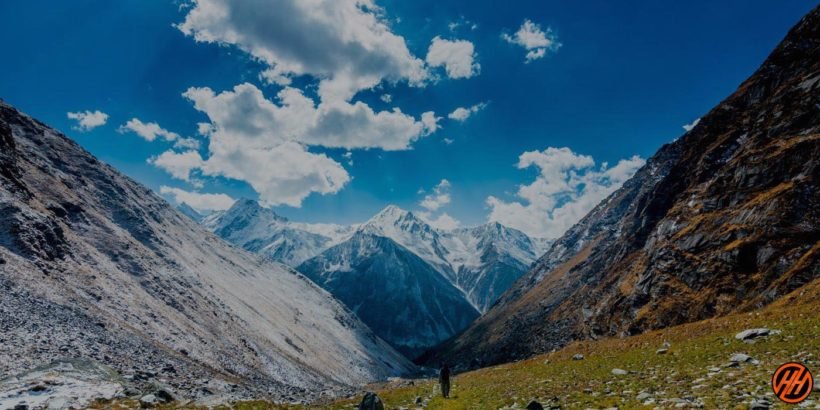













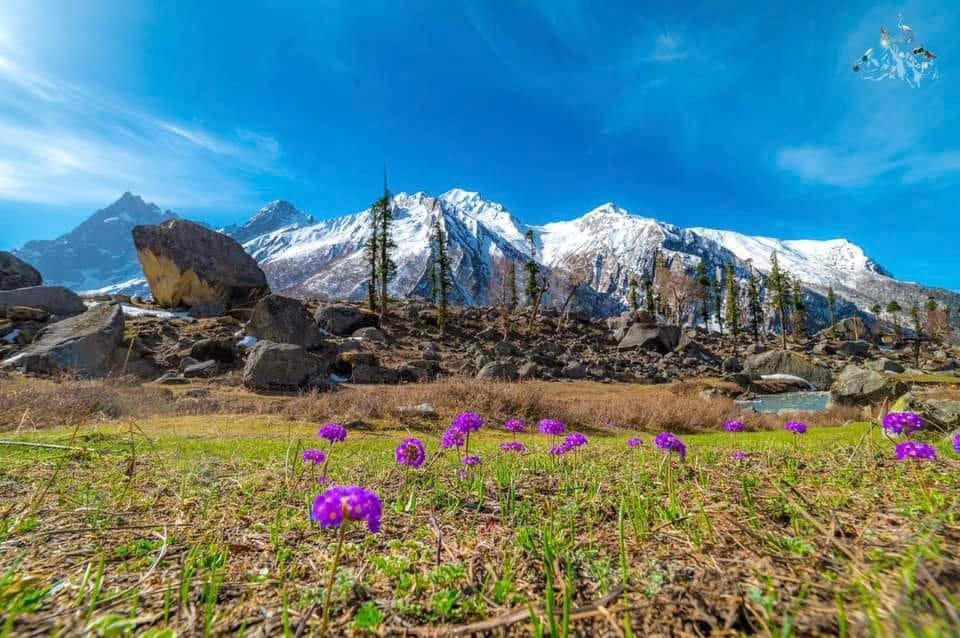
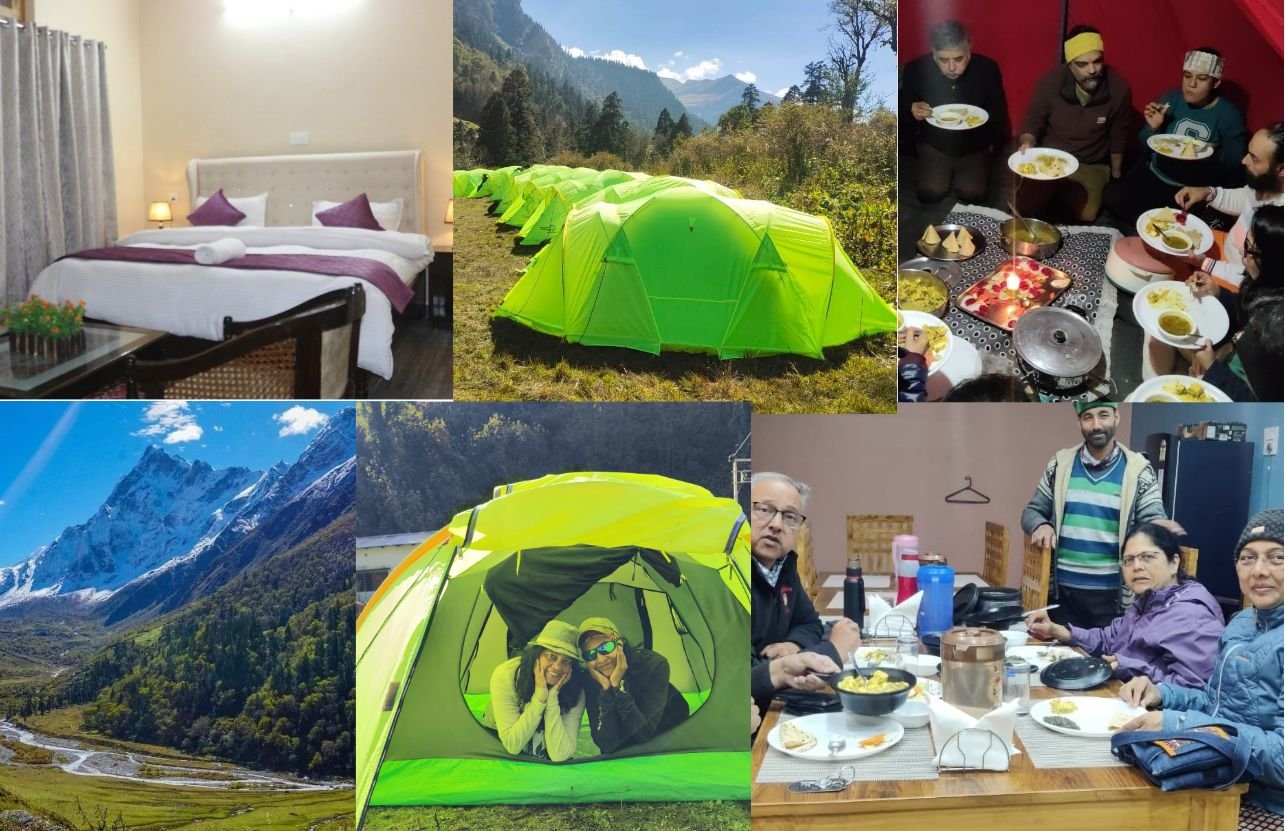
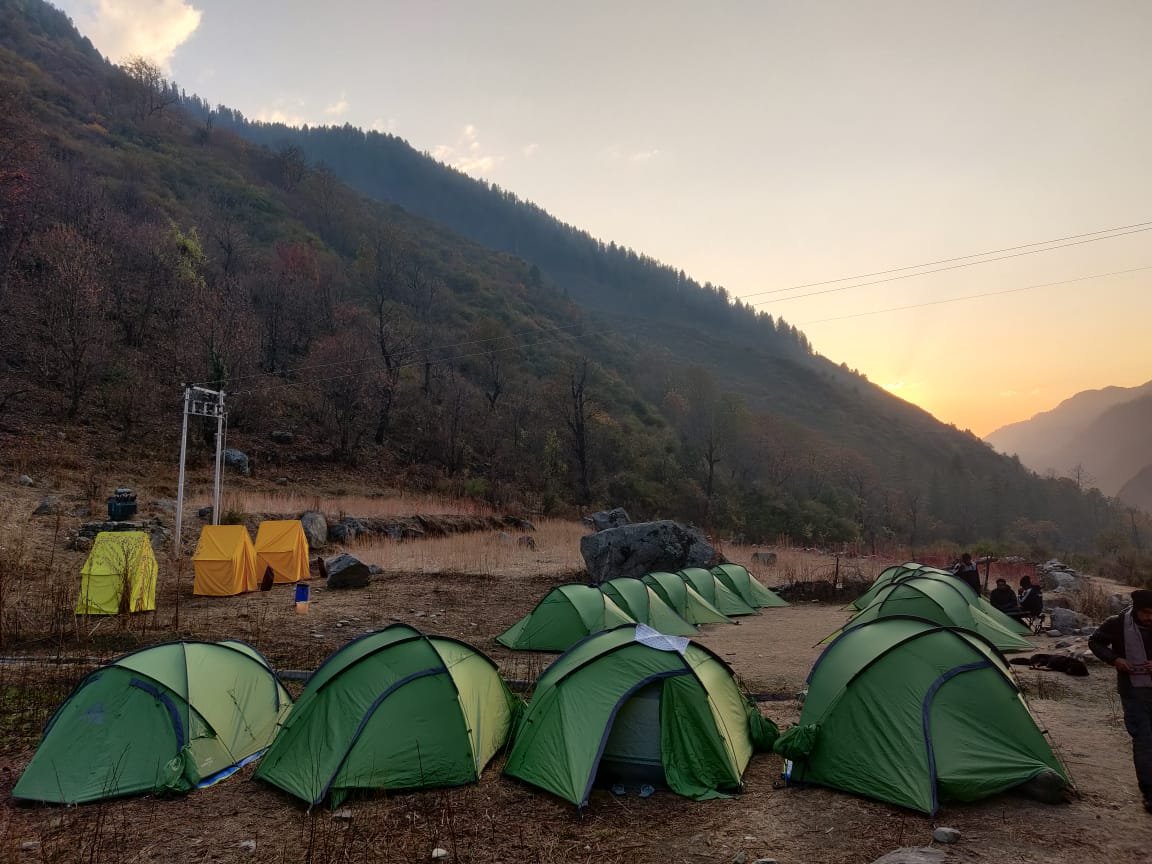


 Weather conditions
Weather conditions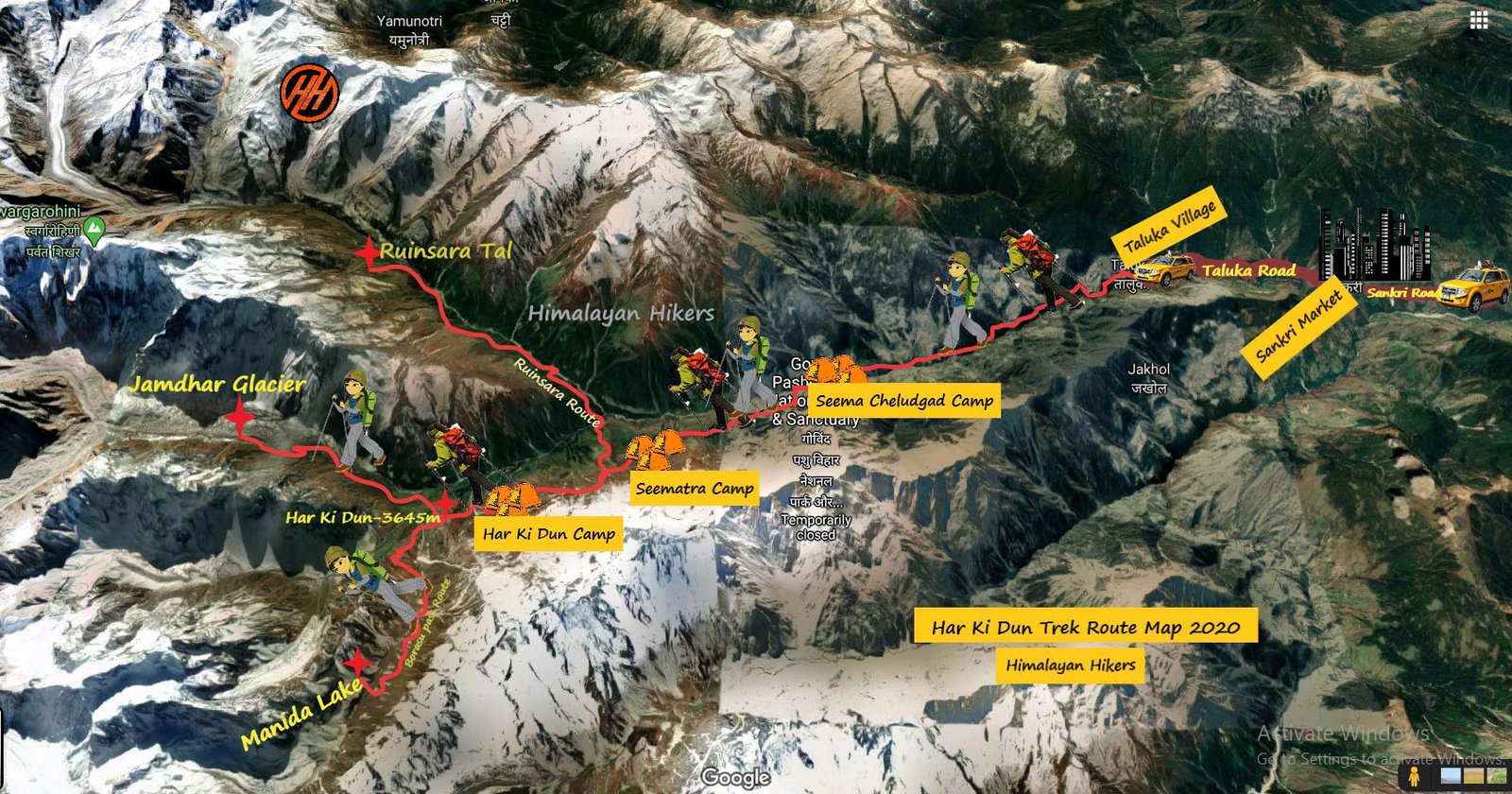
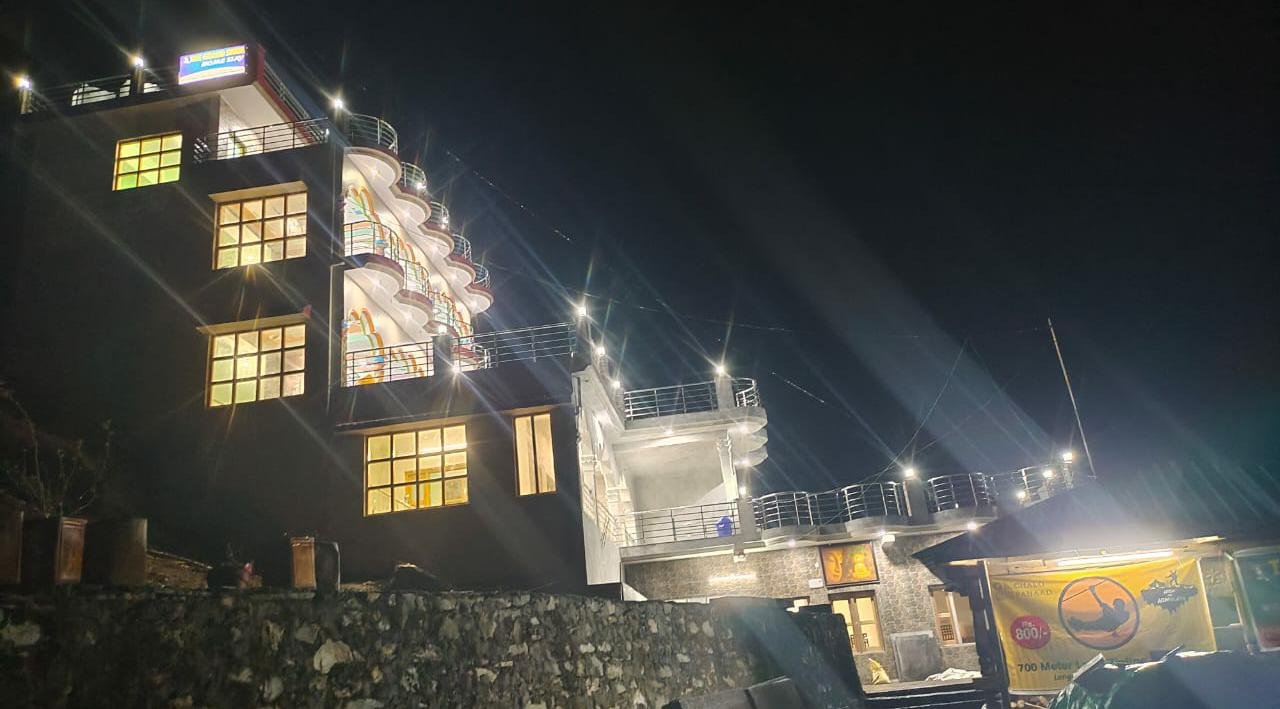
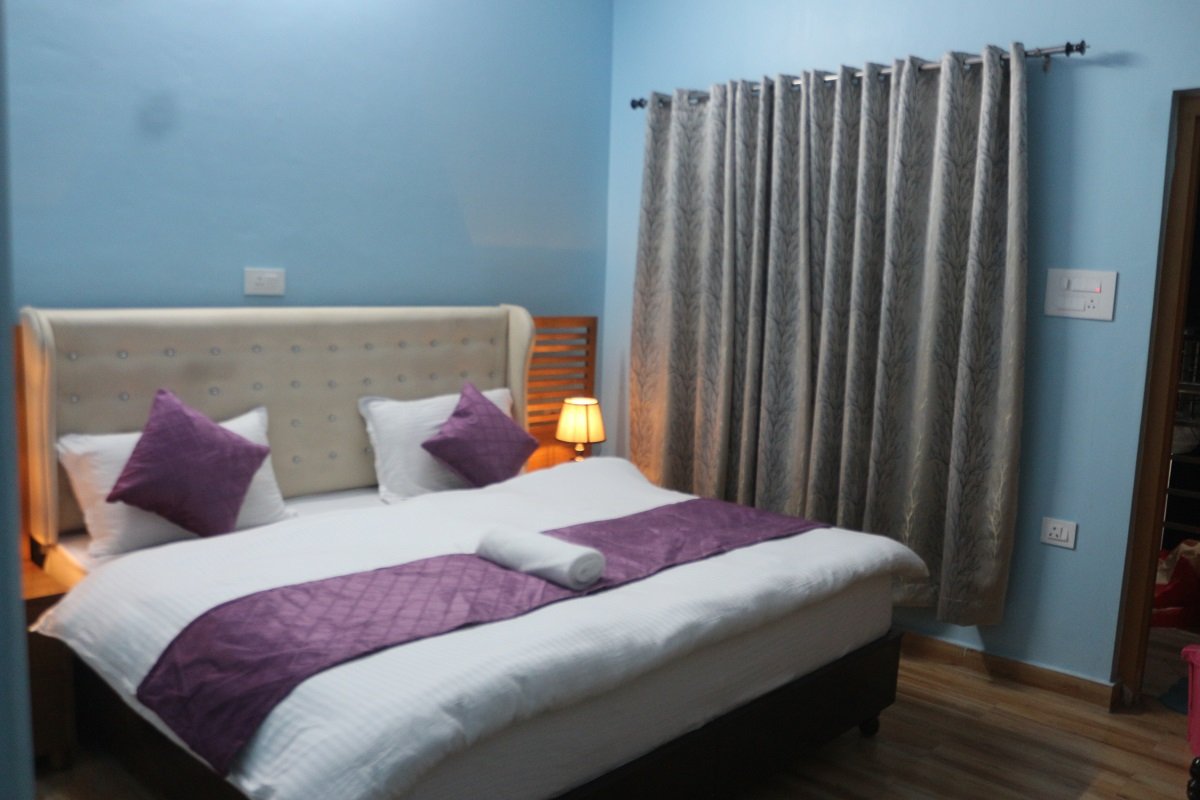
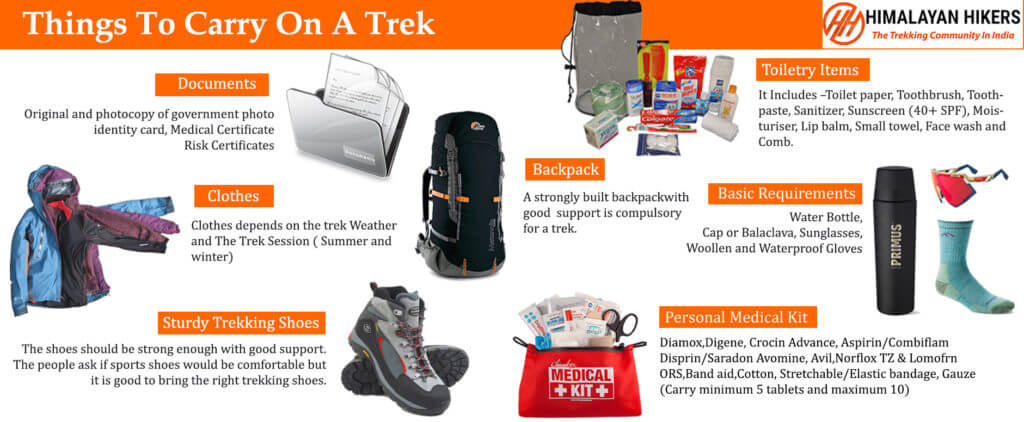


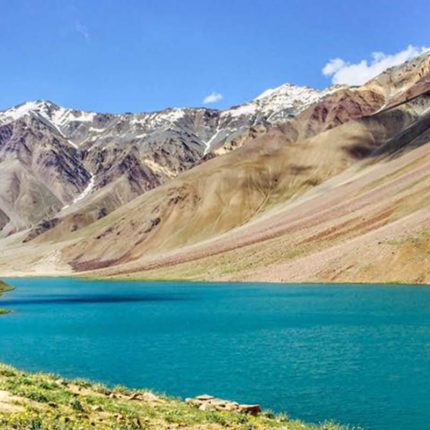
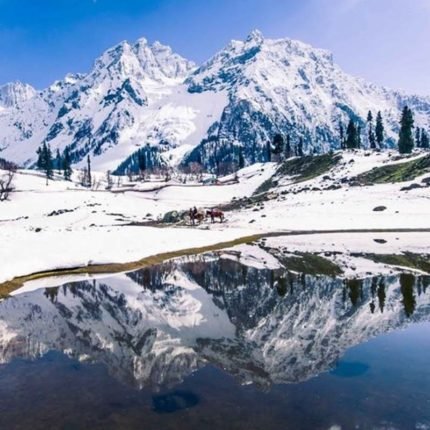
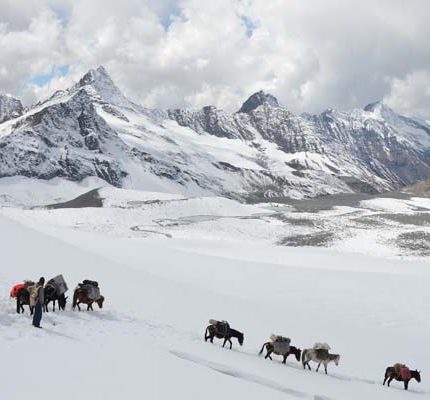
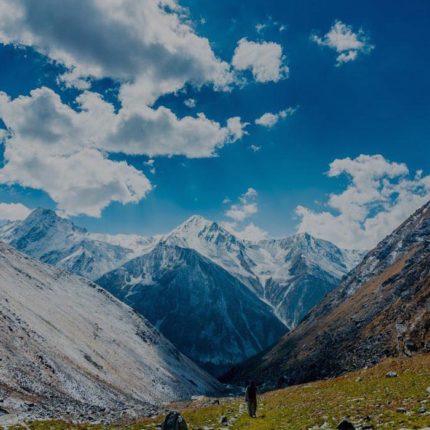
Karthik –
My wife and I recently done har ki dun with himalayan hikers. It was one of the most beautiful trails i ever witnessed. I thank himalayan hikers for making this memorable. Right from the pick up until drop, I never felt the need of any thing. Each and everything was taken care of. The food was amazing through out the trek. The himalayan hikers team treated us not like some random trekkers but like family. I really appreciate this thing. The guide was very experienced and made sure that we made the best of each and every second we spent on the trail. I thank each and every member of himalayan hikers team who made our trek an unforgettable one. Its more than worth what we have paid for. Thank you.
Amitha Nair –
The trek for Har Ki Dun was really beautiful. We were a team of 6 and the guide was helpful with proper information. The highlight I would like to point out is about the food served was hot and everyday there were better options than the previous day, I could not expect anything better while camping in the hills. We were taken to all the places as the itinerary suggested. We went around the villages 300 years old and met the local people. And also experience the local tea and the pahadi maggi. Only feedback I would have was to train the younger staffs as a part of the guide’s team to be respectful as we all come tired from the trek. But there were no hickups whatsoever.
riju das –
I had very good experience with himalayan hikers for har ki dun trek. The food was really amazing and the guide Ganga g was helpful in nature. The entire trek was very organized. So 5 star for them…cheears
Iimon –
very good trek. very good organization by Himalyan Hikers. the scenary is very good. loved the valley. very beautiful place. lloking ahead for next time.
Natasha M –
The trek was breathtakingly beautiful. We went in November and even experienced snowfall. Himalayan Hikers had planned the trip very well. Our guide Vikram along with Dhanesh and the rest of the team were friendly yet professional and took good care of us and the food cooked by chef Pradeep, was delicious. Our children aged 12 years and 9 years, enjoyed the trek thoroughly. Thank you Deepak and Kuldeep.
Shailendra Sajwan –
I planned this trek as solo and was amazed by the service of Himalayan Hikers. The way they organised the entire trek, was fantabulous. The food was beyond expectations with great taste and variety in each meal. Looking forward to have more trek with Himalayan Hikers
Himalayan Hikers –
thanks Mr. Shailendra sir ji
Ahin Chattopadhyay –
We completed Har ki Dun trek with HH, starting from 2nd October to 8th October. HH had been brilliant, starting from cooking to our sleeping arrangements. They had been excellently cooperative and attentive towards our needs. It was a pleasure travelling with them.
Himalayan Hikers –
thanks Mr. Ahin Chattopadhyay ji
Sindhu and Ben Clark –
We have known Kuldeep and his team for over a decade and have never been disappointed. The team is excellent, food exceptional and wholesome. Harish, Negi and Janak took care of us. Home stay in Oslo was wonderful.
Thank you to Kuldeep and his team….
Himalayan Hikers –
thanks Sindhu madam ji – Our team will be very happy with your experience
Kritika Bhatt –
As suggested by my father who has done this trek almost 3-4 times now, I decided to give Har Ki Dun a try. It was just me and my partner who started the journey along with Kamlesh ji (lead guide), thapa (cook) and in no time they became like family. The entire experience was so warm and surreal. Adding to the beauty of the mountains, the staff made sure we have the best time of our lives. The humble yet sumptuous food, welcoming attitude and heartwarming hospitality made this trek a cake walk. If you want a trek to be more than just walking , you need to try it out with these people and through Himalayan Hikers. I have already planned my winter trek with them. Hoping to weave more memories with these amazing people. Cheers to the team and the company. ❤️❤️❤️❤️
Himalayan Hikers –
thanks Kritika ji With this experience, our team will do even better, welcome you again
Madhuchanda Basak –
we a group of 11 trekkers mainly sr.citizens trekked har ki dun/view pt jaumdhar glacier. we reached Dehradun from Noida on 30th april’22 & were received by Himalayan Hikers and were taken care of till we safely reached back Dehradun. The quality of logistic supports & food provided by the agency during trekking was of high standard & at reasonable price.
we plan to trek Tarsar Marsar trek in Kashmir with them by august end.
Himalayan Hikers –
Hi sir namaste please call us 9756197558
arti Chauhan –
Himalayan hiker one of the best trekking organisation.
The way they organise all events are really good… ??
Manmohan singh Negi –
Loved The Trip And Enjoy Full ❤️
Great Experience ❤️
Thanks for the wonderful Trip ❤️❤️
Prachu Bhatele –
Recently our Group of 11 members went on the Har ki dun trek which was organised by Himalayan Hikers. Our group members were of different age groups and physical standards.
We were very happy by the professional manner in which the trek was conducted. The guides were excellent and ensured we have a great and enjoyable trek. The support staff was excellent and the standard ad quality of the food served was outstanding.
I strongly recommend Himalayan Hikers to conduct any future treks. Well done and keep it up.
Monika shah –
i didi har ki dun ruinsara tal trek with himlayan hikers 3 to 11 oct 2021
good hospitality and very caring people . good food and best equipment, tent, sleeping bag pillow foam mattress
himalayan hikers local trekking organisation in sankri har ki dun valley
thanks H.H
Mahesh Shah –
)-”I already given a 5-star rating, but I also wanted to provide my two cents in case anyone is unsure about purchasing”
Feedback from Mahesh Shah, Mumbai.
We were group of 26 senior citizens and we intended to go for a first trek in our life to Har-ki-Dun in Oct 2012. We hired 15 horses, as some people wanted to go on horse not to trek. It was quite difficult terrain. Mr.Chain Singh and his team had managed quite well to an extent I can say that I have a doubt whether other team could have managed such senior citizens with care and love. I strongly feel that Mr.Chain Singh and his team can deliver to the trekers best services and attention. I recommend to all as we had best experience with him. If you want to contact me for further information you can call me on my mobile 09820023462. Mahesh Shah, Mumbai.
CHITRA SHARMA –
CHITRA SHARMA from Bangalore
I did my Har ki Dun trek from 29th Dec to 2nd Jan 2016 with Himalayan hikers . It was a great experience. Kuldeep ji, it was a pleasure meeting an experienced mountaineer as you.. The staff Ramesh ji and Vikram ji took very good care of us. Thank you for organizing a wonderful trek for us. Looking forward to more treks in future..
Abhishek Bhargava –
To describe har ki dun I only have these words – “WOW”. After witnessing nature at its best I lost my heart there. I had no idea that my first Himalayan trek would be so amazing. Everything went smooth on the trek because of good arrangements and execution. The facilities and services provided were outstanding and the adventure of this trek was perfect for us. After combining everything, I want to say that our group had a great experience. – Abhishek Bhargava, Mumbai
Beena Gada –
Our trek to Har ki dhun was in the end of march.being my first trek ever i was not that prepared but the motivation what we got from the team himalyan hikers was great.They are great backups who will stay with you till the end even if you are the slowest and motivate you to complete the trek.The food and hospitality is the best.We specially thank Pramodji and Gangaji our trek leaders who were very helpful.
We had the best of experience with team Himalayan hikers.I. Surely going to plan my next trip with them very soon with my kids.
Moitreyee Dutta –
One of the best trekking organisation.
The way they organise all events are unmatchable. And the guides are the treasure of this group.
Sukeshi Vora –
We had amazing winter trek of Harkidun with Team Himalayan Hikers…..Taking shelter in cave during adverse snowstorm and having riverside birthday celebrations of my son were the unforgettable experiences gifted to us by Gangaji and Pramod Ranaji…..Warmth and hospitality of staff is beyond words!!! In fact when all other trekking companies backed out due to heavy snowstorm, Himalayan Hikers team motivated us to complete the trek and reach the summit to admire the virgin beauty of mighty Himalayas. We’re eagerly awaiting to do Rupinpass trek ,Bardasar lake trek and Annapurna basecamp trek with them!!! Just can’t forget sipping hot tea with snacks sitting on riverside dining table….in misty weather!!! Trekking with Himalayan Hikers was an awesome experience!!!
Deb –
It’s a must go trek for all the trek lovers. Himalayan hikers has a very good team to organize this trek. We enjoyed a lot and waiting for our next trek with Himalayan hikers.
Arnab Ganguly –
We went with Himalayan Hikers on june for Har Ki Dun trek. They are awesome. Starting from food variety & quality, their guides and accomodation they were very good. They take care of every small things. Will love to do trek again with them.
Pankaj bhandari –
I have done har ki doon with himalayan hikers and trust me what they committed they stood upto that ,they provide us everything food, tents, mules, medicines …thing which I liked most is the staff efficiency. They have really experienced staff who are very polite and helpful .they will help you through out your journey…so I will highly recommend them…Thanku kuldeep singh ji , chain singh ji for making my trip so amazing and successful